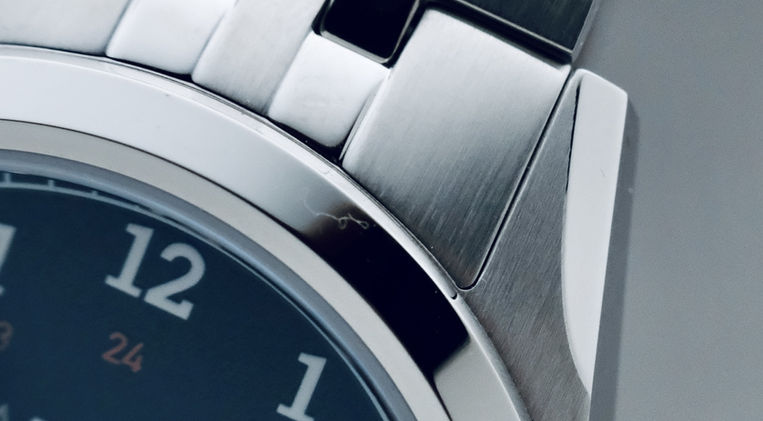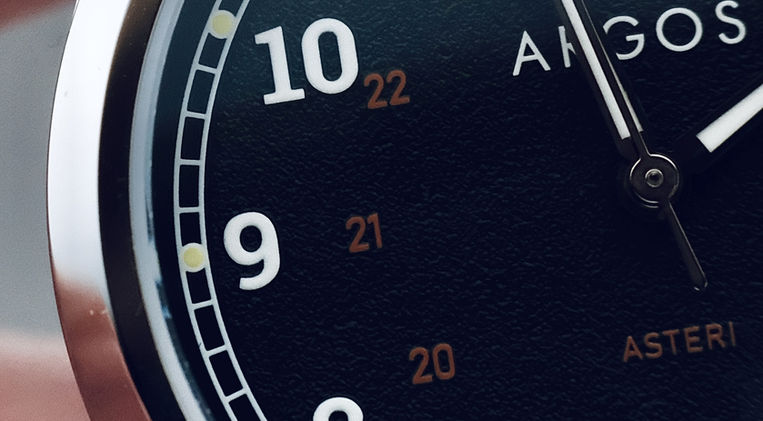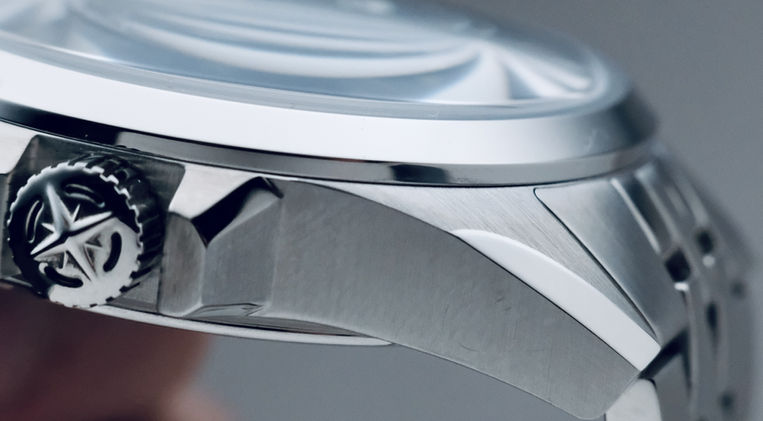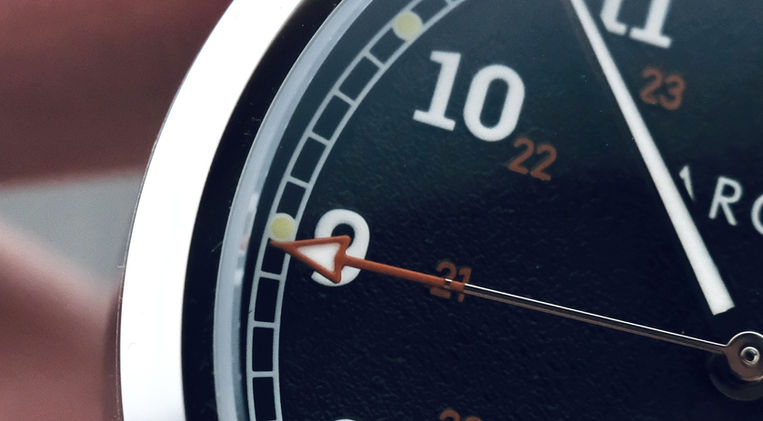Argos Asteri
The Fresh, Elegant, and Modern Field Watch
Field watches, exploration watches, GADA watches, however you prefer to name these kinds of timekeeping devices won’t change their raison d’être: to venture to new corners of the earth, explore new landscapes, and discover new cultures. And in the process—ideally—to make it possible for us to better understand who we are and what we’re made of. More than any other type of watches, field/exploration watches are perhaps the best suited ones for such adventures as well as for your casual daily meanderings. Think about it: they come with legible and straightforward dials (no fancy trickeries to conceal what they are,) they’re generally well spec’d, and they tend to fly under-the-radar, the latter being one of their key characteristics which explains why they’re darn good at so many things.
With divers, field/exploration watches are also one of the most common types of timepiece you will encounter coming from the micro/indy market. They are also the ubiquitous staples of many enthusiasts’ collections who start with one or acquire one somewhere down the rabbit hole. However, because they are so common and have been around for so long (think World War I era) then they are difficult to reinvent. This is why many brands don’t bother thinking outside the box and simply copy/paste what has been done and seen before. But that won’t happen today. No. My dearest friends, I’m pleased to be telling you about the second model from Philippines-based Argos, the Asteri or what I would describe as being a fresh, modern, and elegant field watch.

Specifications
As soon as I said “modern” I implied contemporary dimensions which is indeed true and a good thing. True as in the Asteri measures 39mm in diameter, 46mm lug-to-lug, 13.4mm thick, and comes with a 20mm lug width and a bracelet which tapers to 16mm at the clasp. So these are what we now typically regard as being normal measurements for such watches in the 2024’s. Good because it means that the Asteri commands a certain wrist presence which I find quite welcome here. As you can hopefully see from the photos, this model has an imposing figure which surprised me at first but which I quickly fell in love with. What is perhaps surprising is the fact that the Asteri comes with only 50 meters of water resistance, which is actually enough for what you are supposed to do with this type of watch.
Specs snobs just keep on walking.


What the Asteri perhaps lacks for some in water resistance more than makes up for it everywhere else. Take the movement for example. We find ourselves with a Seiko NH38A caliber (3Hz/41 hours of power reserve) which is known to be as robust as a Toyota Landcruiser and as easy to service as a pair of scissors. It’s a no-date variant of the ultra common NH35A caliber and ticks in a rather healthy manner straight out of the box. This movement is paired with a curved piece of sapphire crystal complete with four layers of inner anti-reflective coating, generous applications of green-glowing SuperLuminova, as well as a superbly finished case. The vertical brushed surfaces are smooth and the polished ones come with a mirror quality to them.

Lastly, the bracelet deserves mentioning as it is a good example of what a stainless-steel bracelet on a field watch should look and feel like. First, it’s a convenient apparatus equipped with quick-release spring bars, on-the-fly micro-adjustment mechanism, and a milled scissor-thing element. But horror! It comes with push-pins…why oh why my Dear Horological Gods and Goddesses did Argos opt for antiquated push-pins instead of the modern and magnificent screwed variety? Why? Well, actually, because it makes total sense here to keep the links thin which is a huge plus on this bracelet. (This aids in making the bracelet lighter and comfortable to wear.) And sensing that you understood (and appreciated?) my sarcasm, I’m totally fine with push-pins. (Did you know that screws can come unscrewed?)
Specs snobs, just keep on walking fast.

Design
Now we’re getting into the weeds of what makes a watch a field/exploration watch and what will make you want to take a closer look at the Argos Asteri. What we typically see on any such watch is the full stack of printed Arabic numerals for the hour markers, an inner 24-hour military scale, a railroad minute track, and legible hands. So the numerals are pretty small for the dial but well-proportioned in relation to the handset. They are displayed in an elegant vintage-style serif font which is—drumroll—timeless. I do appreciate the unusual contrast between the printed numerals and the fully polished obelisk-shaped hour and minute hands. It’s different but not alien-like different. Since we don’t need watches and have even a rarer need for 24-hour scales, I like the fact that Argos decided to print it in red which makes it disappear against the matte blue dial.


As I’m sure you noticed, the model name is also printed in red below the pinion which makes it, as well as the military scale, appear as being separate from the rest of the dial. In other words, they don’t get in the way of reading the time which the latter is an easy thing to do here. Just like the hour markers look vintage, the railroad minute track does too which helps breach the design gap between the then and the now. As you’d see on many vintage and vintage-inspired field watches, there are lumed plots at each hour on the minute track and small hash marks to indicate the minutes. And if my eyes aren’t playing tricks on me I would say that the minute track appears to sit above the dial, another nice little touch. And I’ve got one more for you: the red painted arrow-shaped lumed element at the tip of the seconds hand.

And I would be remiss if I were not to spend some time discussing the case which I positively talked about earlier. It comes with some design elements which remind me of hardcore German tool watches. For example, the straight-cut case flanks, the tall and short crown guards at the three, and the overall blocky appearance created by the long and wide lugs whose presence is enhanced by large polished chamfers. I think it looks absolutely cool. And the alternation of brushed and polished treatments on the case creates interesting and welcome light plays, especially—as mentioned above—on the lugs as well as on the fixed bezel, the latter being entirely polished. A last design detail which I thoroughly enjoy: the star-shaped logo embossed on the crown and surrounded by four incisions.
I’ver never seen anything like it before and I think it looks neat.


The Heart of the Matter
At the heart of the matter is the fact that Argos created the perfect hybrid between a traditional field watch and an everyday timepiece. The traditional comes from the restrained and classic dial layout, the vintage-inspired font the Arabic numerals are printed with, as well as the Asteri’s high legibility. The everyday aspect stems from the case’s modern dimensions, its beefy look, and the perfect combination of the stainless steel bracelet and, lastly, of the playful alternation of brushed and polished surfaces on the case. To me this model commands a solid wrist presence given its dimensions and design, something that I’m not usually a fan of but which works very well here. I bet, should you care for something like this, that the Argos Asteri will direct the attention of many eyeballs to your wrist.

With each model we’re each attracted by one design element in particular. On the Asteri it’s the small area comprising the crown and crown guards which demand most of my attention when I look at this model. I love how Seiko-esque and German-esque this combo looks, having again tall and wide but short crown guards, and a perfectly proportioned crown which looks as good as it operates. And there is one last element the Asteri is endowed with which I find quite fascinating, albeit one I cannot demonstrate with imagery, only with words. It is the feeling of quality and solidity which emanates from pulling the crown to set the time; it is indeed quite something unique and I can’t explain why…perhaps because of the short travel the crown makes, its size, and the quality of its machining. It just works for me.

Conclusion
Yes indeed, I managed to write an umpteenth review on a field/exploration watch and I promise you it won’t be the last. I’m utterly attracted by these types of watches and what they used to stand for and what they continue to mean to the modern watch enthusiast—adventure, exploration, straightforward and simple living. And I for one believe that the Argos Asteri is well made and cleverly designed, and for some of you the icing on the cake would be to know its price: $646 USD for which you get an additional NATO-style strap, a microfiber cloth, additional spring bars and spring bar tool. Yes, I mentioned all of what you get with this watch in order to showcase that if you add an Asteri to your collection, you’ve got yourself a complete horological set and that’s what some of you are simply looking for.
I suggest taking a closer look at the Argos Asteri on the brand’s website where you will notice that it also comes in a green dial version!
Thanks for reading.




























